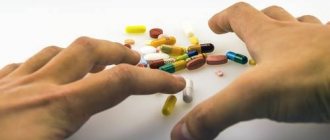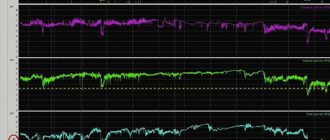pharmachologic effect
Venotonic effect: reduces the distensibility of veins, increases the tone of veins, reduces venous congestion, enhances the vasoconstrictor effect of adrenaline, norepinephrine. One tablet contains 600 mg of diosmin, which is the optimal daily dose for the venotonic effect.
Angioprotective effect: improves microcirculation; increases capillary resistance; reduces their permeability.
Effect on the lymphatic system: improves lymphatic drainage, increases the tone and frequency of contraction of lymphatic capillaries, increases their functional density, reduces lymphatic pressure.
Has an anti-edematous effect. Reduces symptoms of inflammation (dose-dependent effect).
Reduces the adhesion of leukocytes to the venous wall and their migration into paravasal tissues; improves oxygen diffusion and perfusion in tissue. Blocks the production of free radicals, the synthesis of prostaglandins and thromboxane.
A decrease in mean venous pressure in the system of superficial and deep veins of the lower extremities was confirmed, demonstrated in a double-blind, placebo-controlled study conducted under Doppler ultrasound control; as well as increased systolic and diastolic blood pressure in patients with postoperative orthostatic hypotension.
For what pathologies is Phlebodia 600 prescribed?
The drug is recommended for the prevention and complex treatment of various types of venous insufficiency, varicose veins, and dysfunctions of the lymphatic system.
Most people do not notice the initial signs of vascular diseases; most of their signs reveal themselves when the process has progressed. The development of pathologies is facilitated by heavy physical activity, unfavorable heredity, and genetic factors. According to statistics, women are more likely to suffer from varicose veins in the legs. Angiopathy can be provoked by features of the profession:
- long periods of standing or sitting;
- physical inactivity.
Vascular dystrophy worsens during pregnancy and labor.
In order to start therapy on time, you need to pay attention even to seemingly harmless changes in your physical condition:
- severe leg fatigue in the evenings;
- swelling of the ankles and legs, especially in the morning;
- periodic burning sensations, tension in the lower extremities, aching pain.
The initial stage of varicose veins of the anal veins - hemorrhoids, is manifested by minor itching, burning and sensations of a foreign body in the rectal area.
The development of venous and lymphatic insufficiency is facilitated by cardiac dysfunction, hormonal imbalance, and chronic lack of vitamins and minerals in the diet.
Phlebodia 600 helps prevent the progression of an already established disease or serve as its prevention for predisposed people. The drug is prescribed:
- for symptoms of varicose veins;
- to eliminate edema associated with venous insufficiency;
- in the complex treatment of acute hemorrhoids.
The effect of taking the tablets is observed after 1–3 days: heaviness and pain disappear, the outflow of fluid from the lesions improves, and it becomes easier to move. The result increases throughout the entire treatment period and lasts a long time after completion.
Phlebodia 600 is approved during pregnancy if the expected benefit to the mother outweighs the likely harm to the fetus. The drug does not have a teratogenic effect, but before starting use it is important to make sure that there is no risk of premature termination.
The treatment regimen depends on the severity of the physical condition. For chronic venous insufficiency, take 1 tablet per day for two months. For acute symptoms of hemorrhoids or varicose veins in the legs, taking 1 tablet three times a day for up to 5 days is recommended. Then the dose is gradually reduced. The pills are taken on an empty stomach with water. There is no need to grind them.
If necessary, Phlebodia 600 can be combined with therapy with anti-inflammatory, antimicrobial drugs, and vitamin-mineral complexes.
Pharmacokinetics
Suction and distribution
After oral administration, it is quickly absorbed from the gastrointestinal tract and is found in plasma 2 hours after administration. Cmax in blood plasma is achieved 15 hours after administration.
It is evenly distributed and accumulates in all layers of the wall of the vena cava and saphenous veins of the lower extremities, to a lesser extent in the kidneys, liver and lungs and other tissues.
Selective accumulation of diosmin and/or its metabolites in venous vessels reaches a maximum at 9 hours after administration and persists for 96 hours.
Removal
It is excreted mainly by the kidneys - 79%, as well as by the intestines - 11%, with bile - 2.4%.
How does Phlebodia 600 work?
Diosmin enhances the vasoconstrictor effect of the adrenal hormones norepinephrine and adrenaline, which has a beneficial effect on the tone of superficial and deep veins. Phlebodia helps strengthen the venous network, prevents capillary permeability, accelerates the resorption of edema, and prevents congestion. The drug has pronounced angioprotective properties, improves blood and lymph circulation, the effect of oxygen, blocks the activity of free radicals, and reduces the risk of blood clots.
The drug dissolves in the stomach cavity and is absorbed into the bloodstream. Diosmin penetrates into all liquids and tissues, gradually concentrates in the venous vessels, reaches its maximum level within 14–15 hours and remains there for up to 8 days after administration. Phlebodia metabolites are excreted from the body through the urinary system and intestines.
The venotonic agent is well tolerated by most patients taking it. Cases of negative reactions are rare.
Dosage regimen
The drug is intended for oral administration.
For chronic lymphovenous insufficiency
Prescribe 1 tablet/day in the morning, preferably before meals. The duration of therapy is usually 2 months.
For acute hemorrhoids and exacerbation of chronic hemorrhoids
the drug is prescribed in the first 4 days, 1 tablet. 3 times/day, during meals; in the next 3 days - 1 tablet. 2 times/day, during meals. If symptoms recur, the course of treatment can be repeated as recommended by your doctor.
For chronic hemorrhoids after relief of acute phenomena
It is recommended to continue taking the drug 1 tablet. 1 time/day for 1-2 months.
If one or more doses of the drug are missed, it is necessary to continue using the drug as usual and at the usual dose.
Before using the drug, the patient should consult a doctor.
Treatment regimen
In the complex treatment of hemorrhoids, the use of Phlebodia is accompanied by:
- anticoagulants, which help eliminate bleeding, blood clots, swelling, and have an anti-inflammatory effect (Heparin ointment);
- hemostatics, coagulants, preventing and eliminating bleeding (Natalsid);
- antispasmodics that relieve pain and eliminate spasms of smooth muscles (belladonna extract);
- immunostimulants – strengthen the body’s immune forces, thereby increasing its resistance to negative factors (Posterizan);
- anesthetics that relieve pain and itching (Lidocaine, Benzocaine);
- antimicrobial drugs that prevent the development of infections and eliminate them (Ethazol sodium, Triclosan);
- anti-inflammatory drugs that promote tissue regeneration and reduce swelling and itching (Bufexamac, Hydrocortisone).
In the treatment of hemorrhoids, Phlebodia is used in parallel with other drugs
How to take Phlebodia is written in detail in the instructions for use. In addition, the proctologist is obliged to provide the patient with all the necessary information about the use of the drug.
In the acute form of hemorrhoids or in case of thrombosis of hemorrhoids, it is recommended to drink the product with meals, 1 tablet three times a day for a week. As acute symptoms resolve, the dosage is reduced to 1 tablet per day for 1–2 months.
For chronic hemorrhoids or taking it as a preventive measure, it is recommended: 1 tablet per day for 2 months with meals.
A positive effect when using Phlebodia should be observed within two weeks after the start of therapy. Otherwise, you need to consult a doctor to change the treatment regimen or undergo additional examination, since the clinical picture of the disease has similar symptoms to serious diseases (anal fissure, polyps, rectal cancer, etc.).
Achieving a lasting positive result is possible with a long course of treatment for Phlebodia.
Do not forget that the effectiveness of hemorrhoid treatment largely depends on patients’ compliance with the following rules:
- diet: excluding spicy, fried and other foods that cause constipation from the diet;
- giving up bad habits (smoking, drinking alcohol);
- normalization of work and rest regimes;
- moderate exercise.
Side effect
The incidence of adverse reactions is presented as follows: very often (>1/10 cases), often (>1/100 and 1/1000 and 1/10000 and
The following adverse reactions have been reported while taking Phlebodia 600.
From the gastrointestinal tract:
rarely - dyspeptic disorders (heartburn, nausea, abdominal pain).
From the side of the central nervous system:
rarely - headache.
If any of the side effects indicated in the instructions are aggravated or any other side effects not specified in the instructions are noted, the patient should inform the doctor.
Composition and form of the medication
Phlebodia 600 contains the main substance diosmin, which has a tonic and venoprotective effect. The drug is available in tablet form for oral administration:
- pills are pink, biconvex, in a smooth film shell, gray at the break;
- dose of active ingredient in one tablet: 600 mg;
- auxiliary compounds: cellulose, stearic acid, talc, wax, formative substances.
The drug is packaged in foil cell plates of 15 pieces. Cardboard packages contain 15, 30 or 60 tablets, paper inserts with a detailed description of all properties, indications and regimen of use of the medication. Phlebodia has an optimal dosage of the active substance - 600 mg. One tablet is enough to provide a therapeutic effect for the whole day.
Use during pregnancy and breastfeeding
Pregnancy
The use of the drug during pregnancy is possible only as prescribed by a doctor in cases where the expected benefit to the mother outweighs the potential risk to the fetus.
Experimental studies have not revealed any teratogenic effects on the fetus. Until now, in clinical practice there have been no reports of cases of malformation or fetotoxic effects on the fetus when using the drug in pregnant women.
Breastfeeding period
Due to the lack of data on the excretion of the drug in breast milk, nursing women are not recommended to use the drug.
Pregnancy and lactation
There is no information about the drug passing into breast milk, which excludes undesirable effects on the baby’s health. But, the active component of the medicine can negatively affect the body of a newborn, as a result of which it is not recommended to take Phlebodia during lactation.
During pregnancy, no negative effects of Phlebodia on the woman and fetus were detected.
The use of the drug improves the condition of the patient, perfectly eliminates pathological changes in hemorrhoids and is well tolerated.
Also, during the research, it was discovered that Phlebodia helps restore impaired uteroplacental blood flow.
However, in each specific case, a specialist must compare the risk to the health of the unborn child and the need to use the product. In some cases, it is advisable to replace Phlebodia with a more gentle local treatment.
During pregnancy, the use of Phlebodia should be treated with extreme caution.
In any case, it is customary to prescribe the drug only from the 2nd trimester of pregnancy, and stop taking it a month before the planned birth, in order to avoid the risk of bleeding during labor.
In the acute stage of hemorrhoids, Phlebodia is prescribed 1-2 times a day for a week, together with meals, in the dosage recommended by the doctor.
As a preventive measure or for chronic hemorrhoids, the duration of treatment is 1–2 months, once a day with meals. The dosage is determined by a specialist.
Side effects and contraindications
During treatment with a venotonic agent, negative reactions from the digestive and central nervous systems occasionally occur:
- headache;
- abdominal cramps, nausea, heartburn.
Phlebodia 600 is contraindicated in children under 18 years of age and nursing mothers: due to its insufficiently studied effect on the body. Another reason to refuse therapy: individual intolerance to the components of the medication.









